It was a slow evening at the pub. Through the blue and grey smoke diffusing through the room, I smelled something familiar. It smelled like my music teacher’s leather jacket; it smelled like his trumpet and my piano and avoiding my lessons.
Four, college age men sat at a table and one of them was holding a long, clay pipe. Like some sort of mystic ceremony, they passed it around the table, taking a puff, savoring the flavor, and passing it to the next.
Within a week, I found myself at a small, old tobacconist with a statue of an Indian chief standing on a block with the word “TOBAK” written on it. I remember circling the tourist area a number of times before I even worked up the courage to park. It took me even more time to walk inside.
I was completely out of my element. Large glass jars were filled with different types of tobacco, all of which looked so similar, aside from the one in a porcelain jar with a portrait of a Middle Eastern man painted on it; I later discovered that this was the one English tobacco that the establishment offered.
I am sure that I lingered too long in my attempt to blend into the woodwork, but I eventually asked to purchase the same pipe that the guys at the pub had been smoking. I work at a Renaissance Faire during the summers – yes, I’m lame like that – and I justified the purchase to myself by thinking that, if I didn’t take to the pipe, I could at least use the clay one as a prop.
I remember taking the long box that contained the pipe and my two plastic bags full of bulk tobacco back to my dorm room and hiding them in the bottom drawer of my desk. I wasn’t hiding it from my roommate, since I didn’t have a roommate. Perhaps I was hiding it from the memories of my parents telling me how evil tobacco is. What I could not hide, however, was my excitement: a slight feeling of butterflies in my stomach, smiling like an idiot, and anticipating my first experience.
To say it was not the best of experiences might be an understatement, and, much like most bad first-pipe-experiences, it was entirely my fault. I was trying to use flimsy matches to light a pipe that was poorly packed and around a foot-and-a-half long on a cold, windy night, while perched on a ledge of a dormitory building. I think it might have been easier if I had been trying to juggle eight rabid pit bulls while trying to light my pipe.
Eventually, however, I got my pipe lit. I liked it. I lit it again – not too surprisingly, my pipe went out continuously – and I liked it even more. Every time I lit my pipe, I burned away my hesitance and realized that this was going to be a passion. I had been baptized by fire.
As I mentioned earlier, I worked at a Renaissance Faire at the time and took my pipe with me on show days. For the most part, I was just able to use it as a prob, but I was occasionally able to steal a puff or two. It was fun to be able to combine part of my regular life with my participation at the faire.
One day, as I was doing an improv routine with one of my friends at the Renaissance Faire, my pipe stem broke. It was tragic, but not overly surprising, since it was, in fact, a tavern pipe. Tavern pipes were intended to be shared by patrons at a pub, with the tip of the pipe broken off after each use for sanitary purposes.
It broke my heart to see my very first pipe split in half, despite the fact that its new size was much more manageable.
That was about two years ago.
About two weeks ago, I saw something that caught my eye, tugging on my memory as insistently as a child on his mother’s arm.
Many of you are probably familiar with the cutty shape. It is a shape with a long history, inspired by the traditional, clay tavern pipes.
I had seen many cutty pipes and found them intriguing, but none of them did it for me quite the same way as this one.
This rendition, carved by Chris Askwith in England, reminded me exactly of my first pipe. It is almost 11 inches long and is made almost entirely out of a single piece of briar, adding the material of the mouth-piece only at the very end. This continuous nature of the briar mirrors the use of a single material for both the bowl and stem and mouthpiece of the clay tavern pipes.
Another aspect of the old-school tavern pipes that Mr. Askwith managed to capture is the foot beneath the bowl of the pipe. You see that little nob that the pipe is standing on in the picture above? That’s called the foot and was used to hang up the tavern pipes after each use in the pub. While there are many uses for this foot, also called the heel or spur, depending on its shape, the origin of the tradition is debated and still very unclear. Many postulate that it is a result of the molding process, which seems logical, and it is also practically useful to be used as a pipe rest or a place to hold the pipe without getting burnt. Whatever the origin, the detail is a recognizable trademark of the shape that Chris captured beautifully.
I managed to ask Mr. Askwith about this particular pipe and how it came to be: “The idea from the pipe was kind of an accident and experiment, really. My lathe is only capable of making a certain length shank, something around three and a half inches. Because of the cant of the bowl when making this kind of shape, however, I noticed I could extend that length a little.
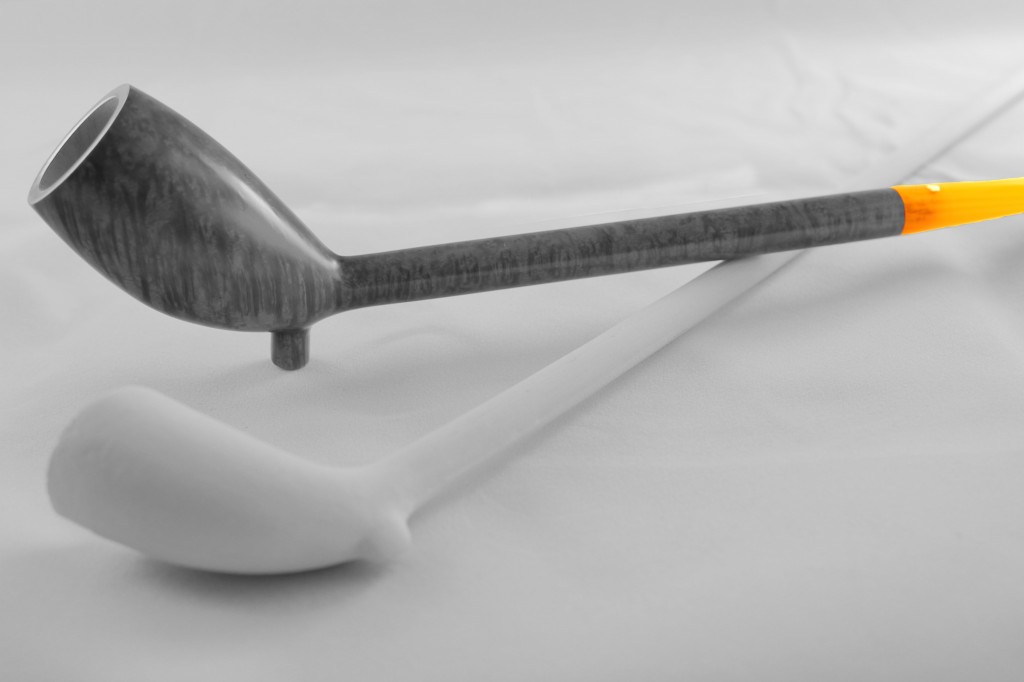 “Some careful measurements later and a good look through my briar stock and I found a block long enough to try this out. I also had to do a little disassembling of the lathe to squeeze it in. Actually, making the pipe certainly was a challenge, dealing with a six inch long shank just ten millimeters thick was a lesson in spacial awareness — just manouvering it around the sanding disc was hard enough. To add to the mix, I then had to be very careful not to damage the little foot which always seemed to be in the way when I was sanding.
“Some careful measurements later and a good look through my briar stock and I found a block long enough to try this out. I also had to do a little disassembling of the lathe to squeeze it in. Actually, making the pipe certainly was a challenge, dealing with a six inch long shank just ten millimeters thick was a lesson in spacial awareness — just manouvering it around the sanding disc was hard enough. To add to the mix, I then had to be very careful not to damage the little foot which always seemed to be in the way when I was sanding.
“I can honestly say I have never sweated so much when making a pipe. At every stage there was danger of doing irreparable damage as there was absolutely no room for error on a classic shape such as this. That being said, however, I have also never felt such elation when I finished the final waxing and was able to take in the finished piece. I am very proud of it.”
This pipe is a pleasure to hold and smoke on any account, but the similarity between it and my very first pipe is something transcendental.
For a while after ordering this pipe, I was convinced that the cutty will become one of my go-to shapes. Once I got to hold and see this one, though, I realized that there was no need: I have found the perfect cutty.
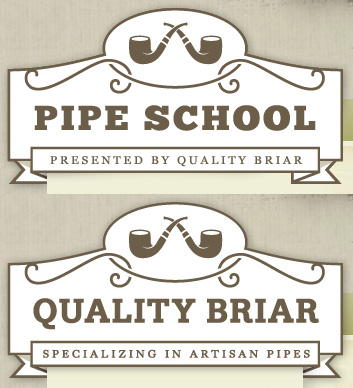
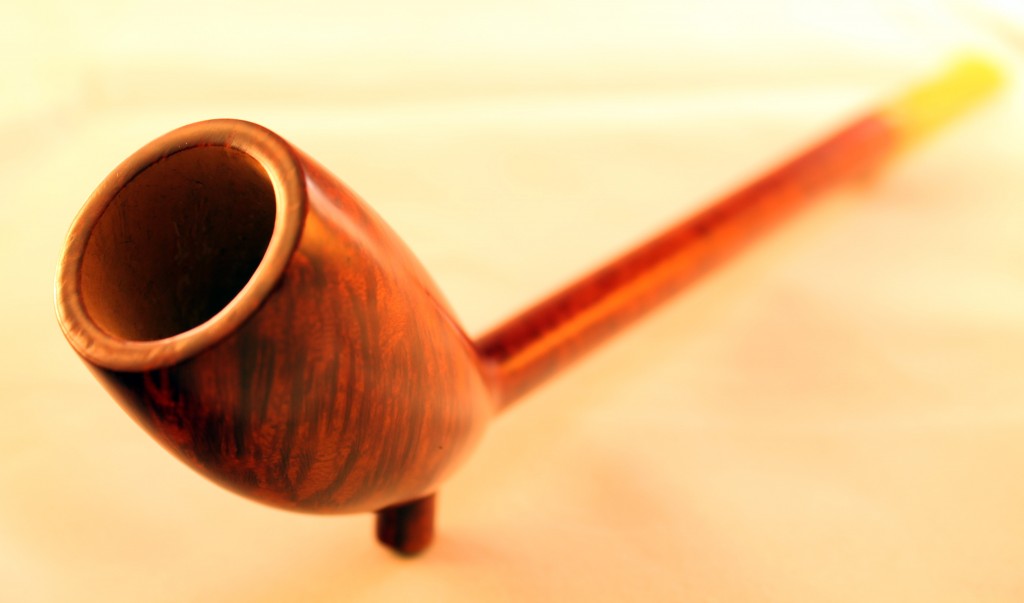

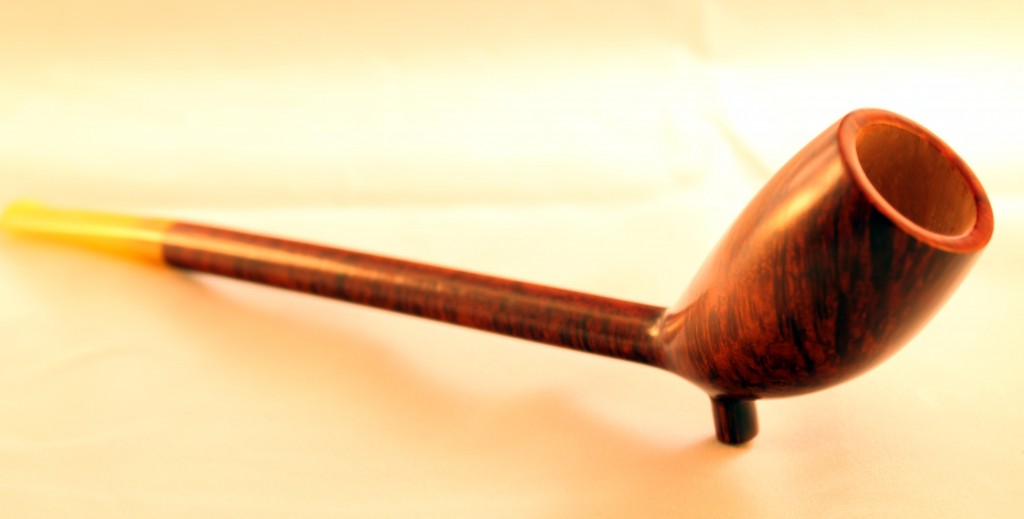
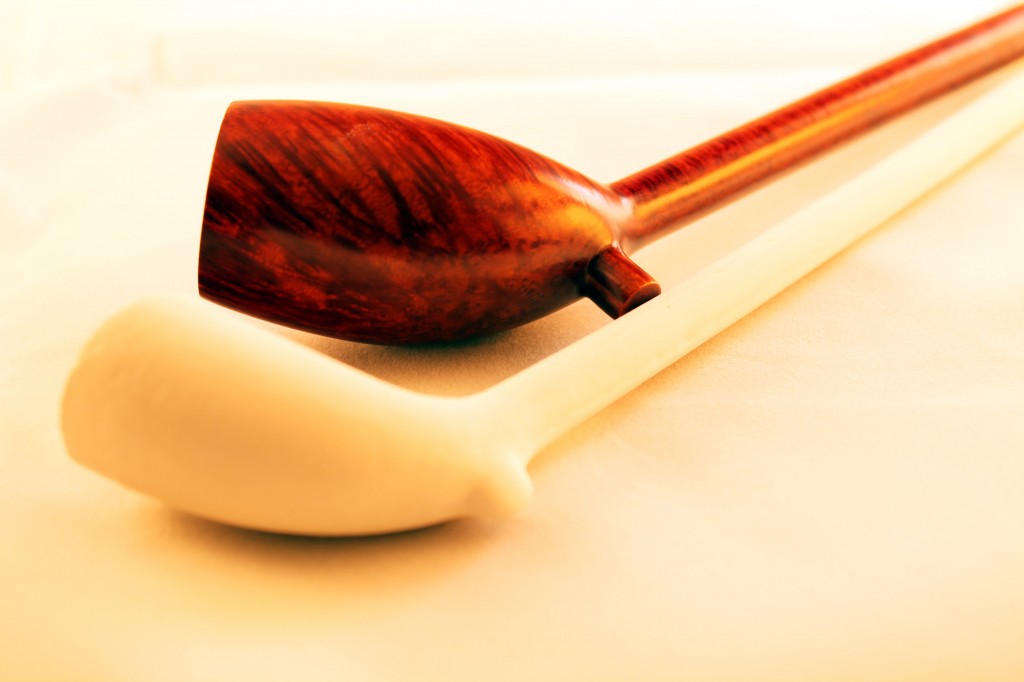

 Subscribe to RSS feed
Subscribe to RSS feed
That pipe Chris made is one of the best creations I have seen for a long time!
I just hope I have the cash on hand when he makes another.
A beautiful pipe. And as I have been making pipes for a few months, know how difficult it must have been to make it.
I have around 95 pipes,most of them estate pipes, but I have nothing like this one.
Alan.
I noticed that pipe on Chris’s website recently. If I’d had enough money available, and had beaten you to it, it would now be on my pipe-shelf! It’s a beauty.
Ethan, I told you before that you beat me to that pipe by just afew minutes! I met Chris last Saturday and discussed the possibility of another one – he said there was and you’d got that one as well!
Having read the story, I don’t resent that at all – just enjoy it (them) to the full!
Jimbo,
Sorry to be a thief! Oh, hell…no I’m not!
The pipes really are phenomenal and I am planning on writing another piece talking about them both together. Big brother, little brother type of thing.
I will make you a deal! I won’t snag the next one. Promise! … Maybe…
Cheers,
Ethan